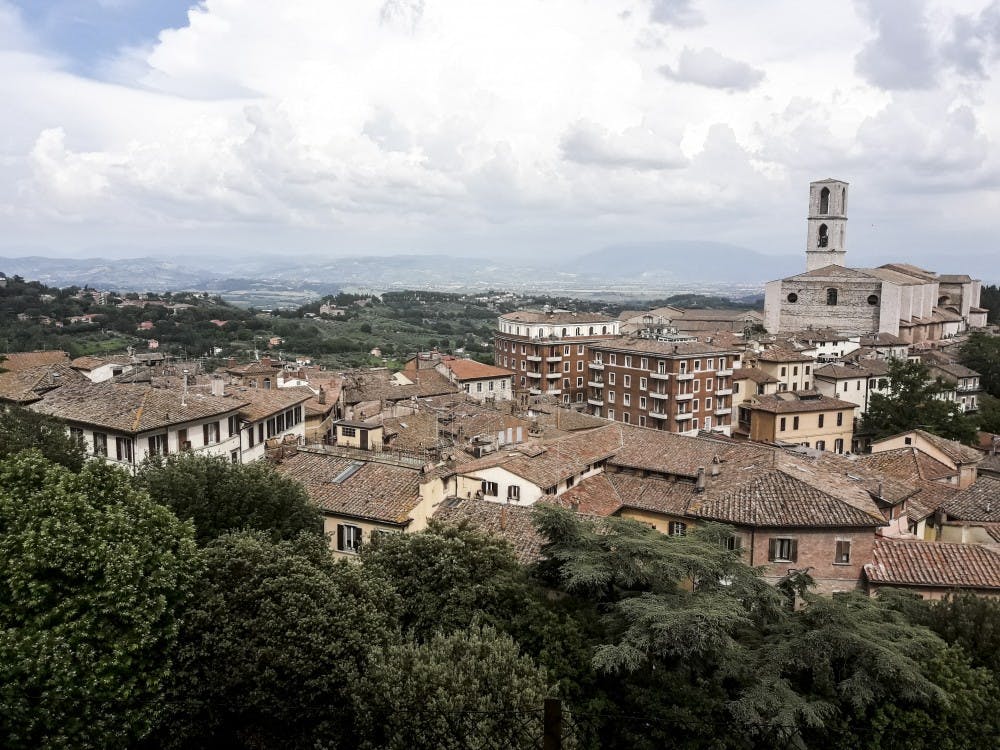Spaghetti alla carbonara in Rome, squid ink pasta in Venice, Margherita pizza in Naples and gelato everywhere in between. These are just some of the dishes I had the opportunity to try this summer during my five-week study abroad experience in Italy.
I do not speak a word of Italian, but I took a leap of faith and traveled with a University of New Mexico professor and three other UNM students to the hilltop town of Perugia, Italy to take a course called Writing Italian Food at the Umbra Institute.
The course itself was pretty much the coolest college class I’ve ever taken. In short, it involved eating great Italian food and writing about it in a series of blog posts we were required to make each week.
Of course no college class is complete without weekly readings and a final research paper. However, I cannot say I have any qualms about reading or writing a research paper while sitting next to a window overlooking luscious green hills covered in terraces in a historical medieval city known for its chocolate.
Despite how simple it may sound initially, writing about food turned out be very difficult. There are many ways to approach the subject. For example, food writing can be used to critique a restaurant, explain the cultural and political history associated with a certain dish, or be used to pass down family traditions and recipes.
The tone of a food writing piece can range from poetic to erotic to scientific, and often does not have anything to do with the food itself. Instead, it revolves around the people sharing the food or the experiences leading up to a meal.
Another challenging aspect of food writing is traveling while doing it. Our professor encouraged us to analyze everything about our food experiences from the decor of the restaurant, to how the staff treated us, to how the food itself was presented and tasted.
Since our class only met twice a week, my travel partner and I would use any spare time we had to explore different parts of Italy. We always made an effort to try the local cuisine of the region we were in, but since we were trying to fit a vast amount of travel into a short amount of time it was easy to sit down at a restaurant and gobble our food down without analyzing it.
It was also tempting to order something familiar, or stress eat gelato instead of trying local cuisine and thinking about the experience.
Another difficult aspect of food writing was the initial language and cultural barriers we faced. Each menu item at a restaurant was composed of a long string of Italian words that were nothing short of intimidating. Also, typical Italian dishes that are eaten in the U.S., such as spaghetti with meatballs and chicken parmesan, are nowhere to be found on Italian menus.
When a waiter would come to take our order, I always felt like a deer in the headlights and would initially resort to smiling and pointing at my desired dish on the menu. However, it quickly became apparent that most waiters were friendly and would attempt to explain dishes we did not understand.
We were never turned away from a restaurant for not being able to speak Italian, and eating tended to serve as a way to un-stress and reconnect with other people after a long day of traveling.
Get content from The Daily Lobo delivered to your inbox
Despite being one of the qualities that made each region of Italy unique, food also served as a universal language that everyone spoke. By writing about food, we furthered our understanding of the language. This helped us learn more about the people around us, and ultimately ourselves.
Mikhaela Smith is a news reporter at the Daily Lobo. She can be contacted at news@dailylobo.com or on Twitter @MikhaelaSmith18.






